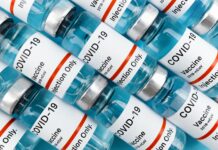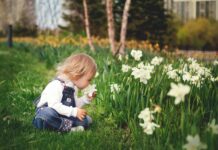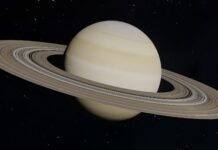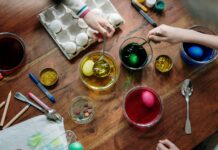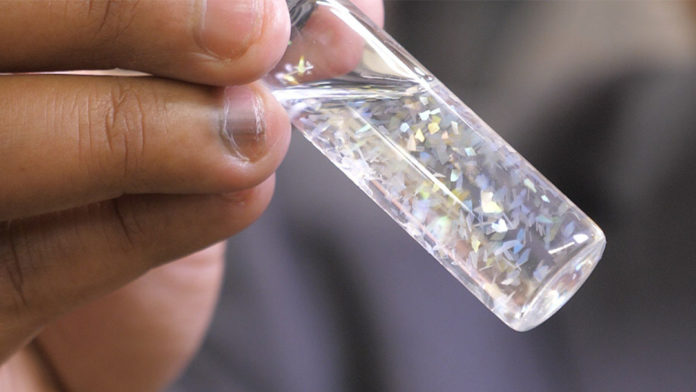The glitter on the market today is made of microplastics.
It’s in our gift wrap, decorations, craft supplies, cosmetics, toothpaste, and skin care products. And if you’ve ever found yourself trying to clean up some glitter but kept finding it everywhere, you can imagine how much harder that gets when glitter gets into the environment and waterways.
University of Saskatchewan researchers want to change all of that without taking away any of the sparkle with their fully plant-based and biodegradable alternative, ChiralGlitter.
ChiralGlitter uses natural structural colours instead of the usual combination of aluminum and microplastics used for colour and sparkle. A stunning example of structural colour is the iridescent blue wings of morpho blue butterflies. Their wings are covered in tiny scales that give the blue appearance without pigment, as the layers of cuticle and air reflect light in a specific way that produces colour.

“We use a biomaterial such as wood or agricultural waste to synthesize cellulose nanocrystals,” said Amin Babaeighazvini, a PhD student working with engineering professor Bishnu Acharya, in a press release.
“Then, we fabricate functional materials from those nanocrystals, such as these biodegradable and edible glitters. The thing that makes this eco-friendly and non-toxic is the cellulose. Nanocrystals are from nature.”
The path to this innovation started when Babaeighazvini was making biodegradable cellulose nanocrystal films. He found that under certain conditions, those films developed iridescent colours, and changing the way those films are structured could also result in a variety of colours. Then he had the idea of crushing up those films, and they crumbled into sparkly, colourful flakes. That was when ChiralGlitter was born.
ChiralGlitter could be used in many of the applications where traditional glitter is used now, and because cellulose is simply a fibre found in all plant cell walls, it’s fully edible and could be used to decorate cakes or cookies without adding food dyes. Cellulose is also the wood pulp that paper is made of, so papers decorated with ChiralGlitter would stay recyclable.
Not only is the product itself non-toxic and eco-friendly, it can also convert waste streams like sawdust into a high-value product. It’s one that the team hopes will be a commercial success as they move forward with their business plan.







